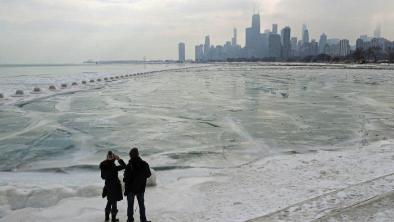Science Source
Resolving Future Arctic/Midlatitude Weather Connections
- States that high‐latitude forcing is a new potential driver for sub‐seasonal weather impacts at midlatitudes in coming decades, given ongoing large changes in the Arctic
- States that some metrics find supporting evidence and others report no robust correlations, while model studies reach different conclusions
- Case studies from particular historical months suggest potential connections
- Proposes that a difficulty in resolving the science is due to the inherent complexity and intermittent character of atmospheric dynamics, which serves as a variable causal bridge between changes in the Arctic and midlatitude weather
- States that linkages may be more favorable in one atmospheric jet stream pattern than another
- States that linkages are a two‐step process: thermodynamic forcing, i.e. warm Arctic temperatures and loss of sea ice, is generally favorable in the last decade, but internal atmospheric dynamics, i.e. the jet stream location and strength, must also allow for a connection
- Thus, in the last decade only a few possible linkage events are noted into and out of the Arctic; for examples 2006, 2016, and 2018 had warm Arctic Januaries, and 2010 and 2017 had cold eastern North American Decembers
- Finds that record large sea‐ice‐free areas and warm temperatures north of Alaska and over Baffin Bay helped to anchor the long wave atmospheric pattern, which in turn fed cold temperatures into the eastern US
- States that intra‐seasonal and inter‐annual intermittency explains low direct Arctic/midlatitude linkage correlations and large variability in model studies
Related Content
Headline

Mar 4, 2019 | Cincinnati.com
Emergency cold shelters brace for out-of-season need this week
Headline

Mar 4, 2019 | Chicago Tribune
Punishing cold to start the week could be winter's last stand in Chicago
Science Source
| Journal of Climate
Preconditioning of Arctic Stratospheric Polar Vortex Shift Events
Jinlong Huang and Wenshou Tian
Science Source
| Science Advances
Projected changes in persistent extreme summer weather events: The role of quasi-resonant amplification
Michael E. Mann, Stefan Rahmstorf, Kai Kornhuber et al


